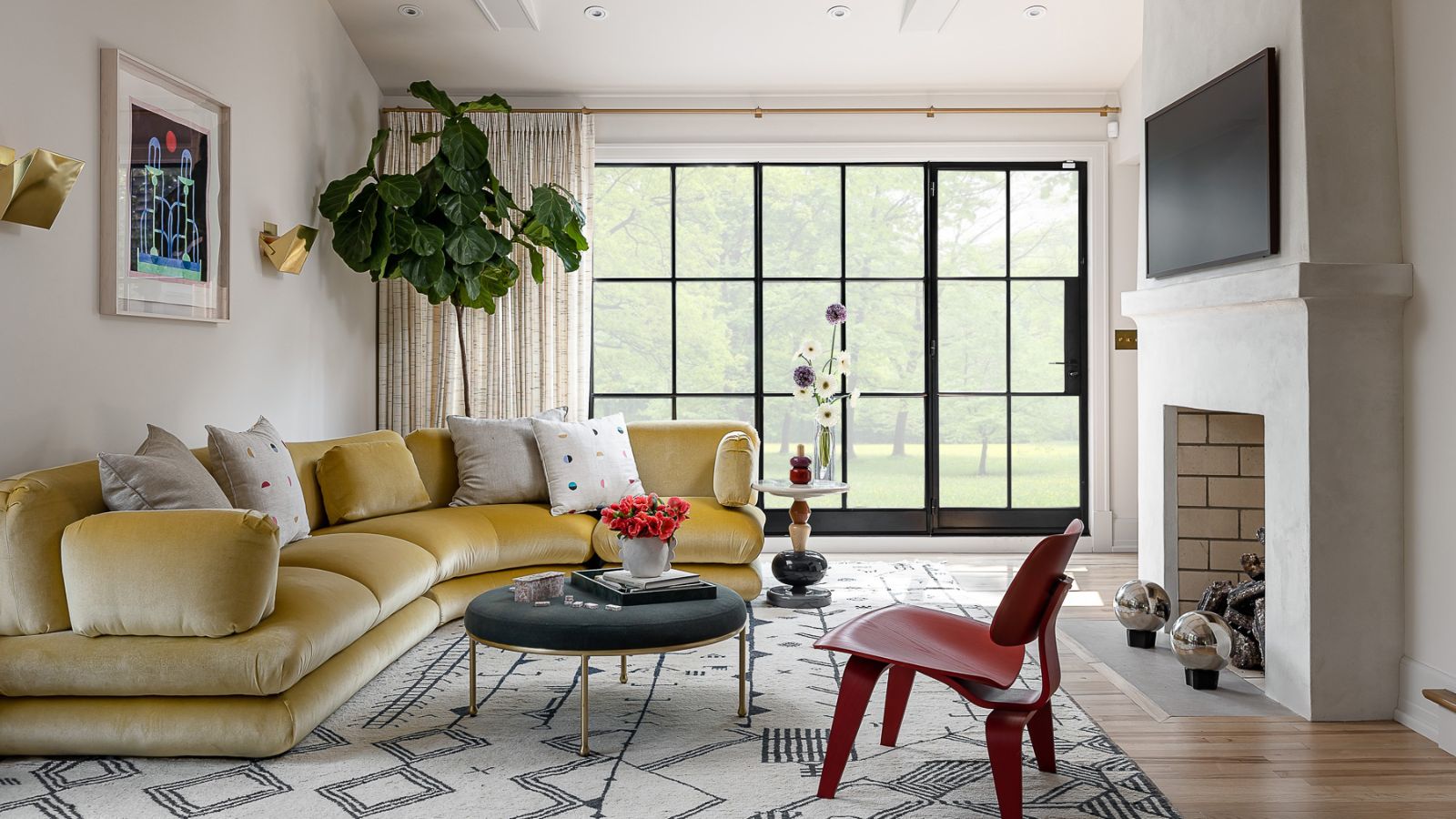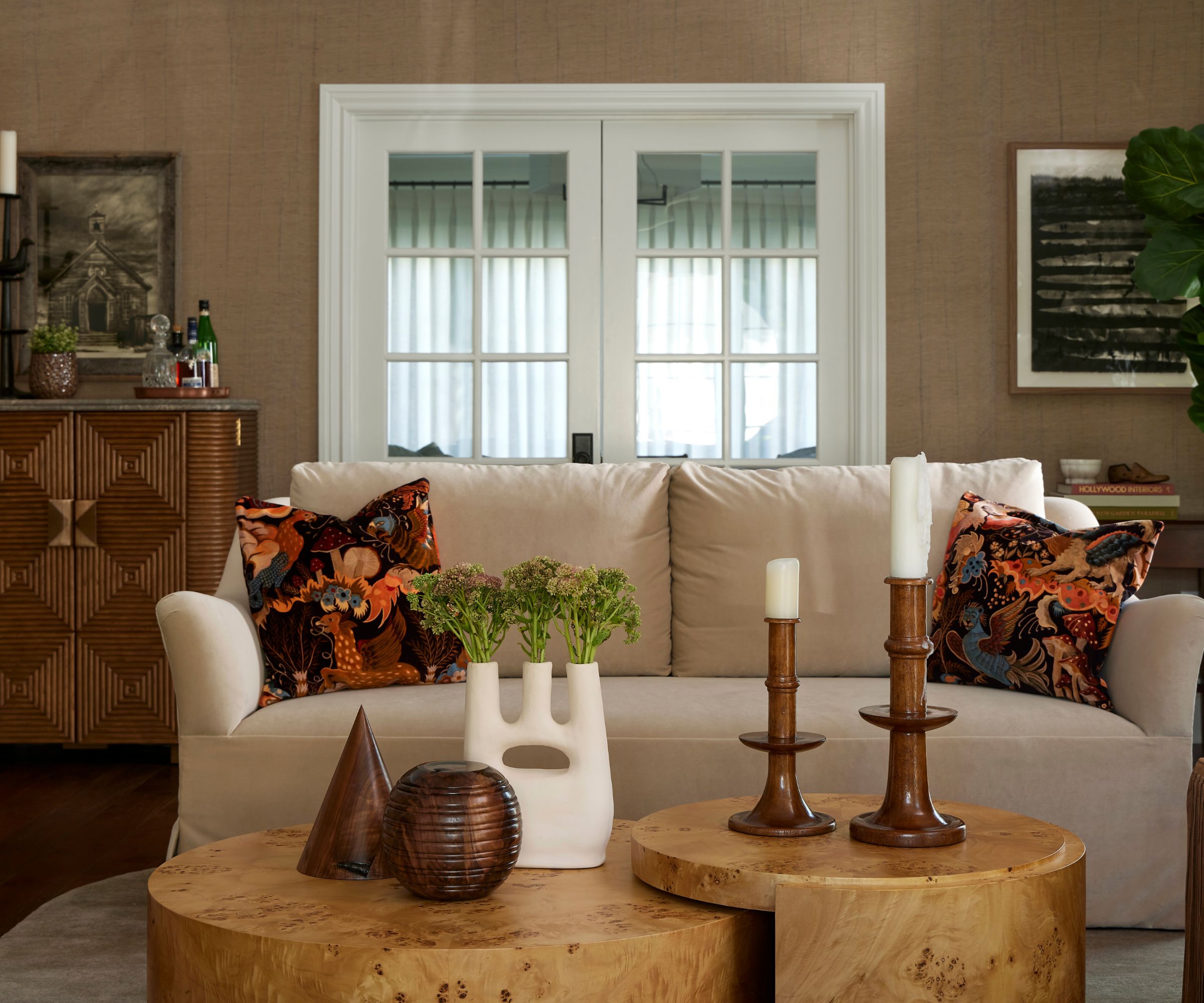
More daylight can make rooms look bigger and contribute to well-being, so who wouldn’t want to optimize it? But when budget forbids calling in the pros, DIY hacks for getting more natural light into your home are required.
Great house design can maximize the daylight that reaches the interior. And in an existing home it‘s possible to boost it by remodeling. Yet there are ways to bring in daylight that are less disruptive and costly and, even better, that you can achieve yourself.
These expert hacks will make rooms lighter, brighter and larger feeling with just a little time and effort that will be well worth it for the results.
5 light-boosting hacks to try at home
Clever decor choices, like choosing the right colors for walls and decorating with mirrors, can boost the light once it’s reached your room. And major interventions such as fitting a roof lantern can increase natural light as well.
But if you want to let more light into your house in the first place and achieve your goal by your own efforts? These are the DIY ways to do it.
1. Clean windows

If window panes attract your attention because of what’s on them rather than the view through them, they’re obstructing natural light.
The remedy? ‘Clean your windows regularly to remove dirt, rain stains, dust, and grime that can block light,’ says Jeramy Sibley, president of Glass Doctor, a Neighborly company. ‘Make sure to clean both the glass and the surrounding frames to ensure maximum light entry.’
Avoid streaks by using the tried-and-tested ways to clean a window for glazing that’s light maximizing.
2. Think curtain rods

Like windows that aren’t pristine, the position of curtain rods could be compromising the passage of natural light into your home. Fabric blocking the glass means fabric blocking the natural light, so you might need to alter the height of a rod or invest in one that’s wider.
‘Opt for curtain rods mounted well above the window frame to allow maximum light exposure,’ says Tina Priestly, CEO of Ready, Set, Refresh. Use the rules designers follow to decide how high to hang curtains and place curtain rod brackets to allow for panels to be pulled away from the glass. Installing curtain rods is a simple DIY job.
And if privacy prevents the glazing being totally unobscured during daylight hours but brightening the room is a priority? ‘Swap out heavy curtains for sheer or lightweight fabrics,’ says Tina. ‘Sheer curtains soften the light and add an airy, ethereal quality to your rooms.’ In other words, more light without compromising privacy.
3. Trim foliage

Cleaning windows and hanging window treatments differently can let more light in, but what if the light’s impeded before it even reaches the window?
‘Trim any foliage that might be overshadowing your windows from the outside to allow more natural light to penetrate your indoor spaces,’ recommends Jeramy Sibley.
‘This is particularly important for windows that face garden areas or have trees nearby. Keep trees and shrubs around your home well-trimmed to maximize sunlight reaching your windows.’
To keep the plants healthy, follow the one-third pruning rule that stops you snipping off too much in one go; it will also help keep their structure open so light (as well as air) flows through the foliage since you’ll want to enjoy their presence along with boosting the light inside your home.
4. Tunnel the light
While it’s a more complicated job than some of the other hacks, fitting a light tunnel, also known as a solar daylighting tube and by other similar names, is a DIYable project.
As the name suggests, one of these introduces natural light into a space in your home via an entry point in the roof, bringing it to the room through a tube and then diffusing it into the space.
‘Because the light is coming from above rather than the side, it provides excellent illumination,’ says Gabriella Dyson, Head of Solved at Homes & Gardens. ‘Even better, one of these can be fitted where a window wouldn’t go.
‘You can pick up the parts you’ll need to construct a sun tunnel in a hardware store when you’re DIYing,’ she advises. ‘But if you like the idea of this daylight booster but don’t want to go up on the roof, you could call in a pro installer.’
5. Borrow light

If natural light is reaching a room well, but the one beyond is dark, then the answer is to borrow the light from the first room. A DIYable way to achieve this is to swap a solid interior door for one that’s glazed – or partially glazed.
Clear glass will maximize the movement of light, but frosted glass will still let daylight through and offer privacy if that’s required.
Think about the door’s style when borrowing light. ‘A single glazed panel lets the most light through,’ advises Gabriella. ‘The muntins of a multi-panel design will block a certain amount. And if you’re opting for a door with, say, two or three glass panels, those with narrow stiles (the vertical pieces) and narrow rails (the horizontal pieces) will minimize light impediment.’
Getting more light into a home has a host of benefits. ‘These strategies enhance your overall wellbeing by making spaces feel more open and connected to the outdoors,’ says Jeramy Sibley. ‘They also support a healthier home environment by boosting mood and productivity through increased exposure to natural light.’







